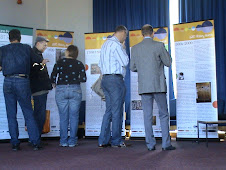
Well Archivists here's a basic how too and how not too.
I will look at different types of material over the coming five days.
Today it is Paper!
First Rule of acrhiving paper based material:
Check there condition.
Keep them out of the light, heat or extreme cold.
Keep in acid free folders.
Do not attempt to repair damages. ( seek the advice of an experienced archivist).
Paper based archives;
Do keep everything you have ever written, diaries, poems, letters you never sent, letters people have sent you. Flyer's, posters, organisational documents all of it.
Even think about keeping that napkin you scribbled on!
Now once you have all this paper based information don't go touching it all over with sticky hands. WASH THEM.
Oh! and when you are looking at letters you have DON'T throw the envelope away. it is dated and will hold a record of where it was sent and too who and when (most important). Unfold any letters you have and keep them flat. If you are really keen that they last then pop them into acid free folders.
If you have a heap of newspaper cuttings. Best thing you can do is photocopy them on too acid free paper. News papers will be a disaster after a short period of time. Cheap paper will not last long.
Local newsletters, women's centre newsletters, gay and lesbian locally produced lewsletters are all well worth preserving.
If you are holding paper together, use brass paper clips, they are better than Staples.
First Rule of acrhiving paper based material:
Check there condition.
Keep them out of the light, heat or extreme cold.
Keep in acid free folders.
Do not attempt to repair damages. ( seek the advice of an experienced archivist).
Paper based archives;
Do keep everything you have ever written, diaries, poems, letters you never sent, letters people have sent you. Flyer's, posters, organisational documents all of it.
Even think about keeping that napkin you scribbled on!
Now once you have all this paper based information don't go touching it all over with sticky hands. WASH THEM.
Oh! and when you are looking at letters you have DON'T throw the envelope away. it is dated and will hold a record of where it was sent and too who and when (most important). Unfold any letters you have and keep them flat. If you are really keen that they last then pop them into acid free folders.
If you have a heap of newspaper cuttings. Best thing you can do is photocopy them on too acid free paper. News papers will be a disaster after a short period of time. Cheap paper will not last long.
Local newsletters, women's centre newsletters, gay and lesbian locally produced lewsletters are all well worth preserving.
If you are holding paper together, use brass paper clips, they are better than Staples.






